Research Summary
I broadly work on developing optimal algorithms for physical layer wireless communication.
Machine learning for wireless communication
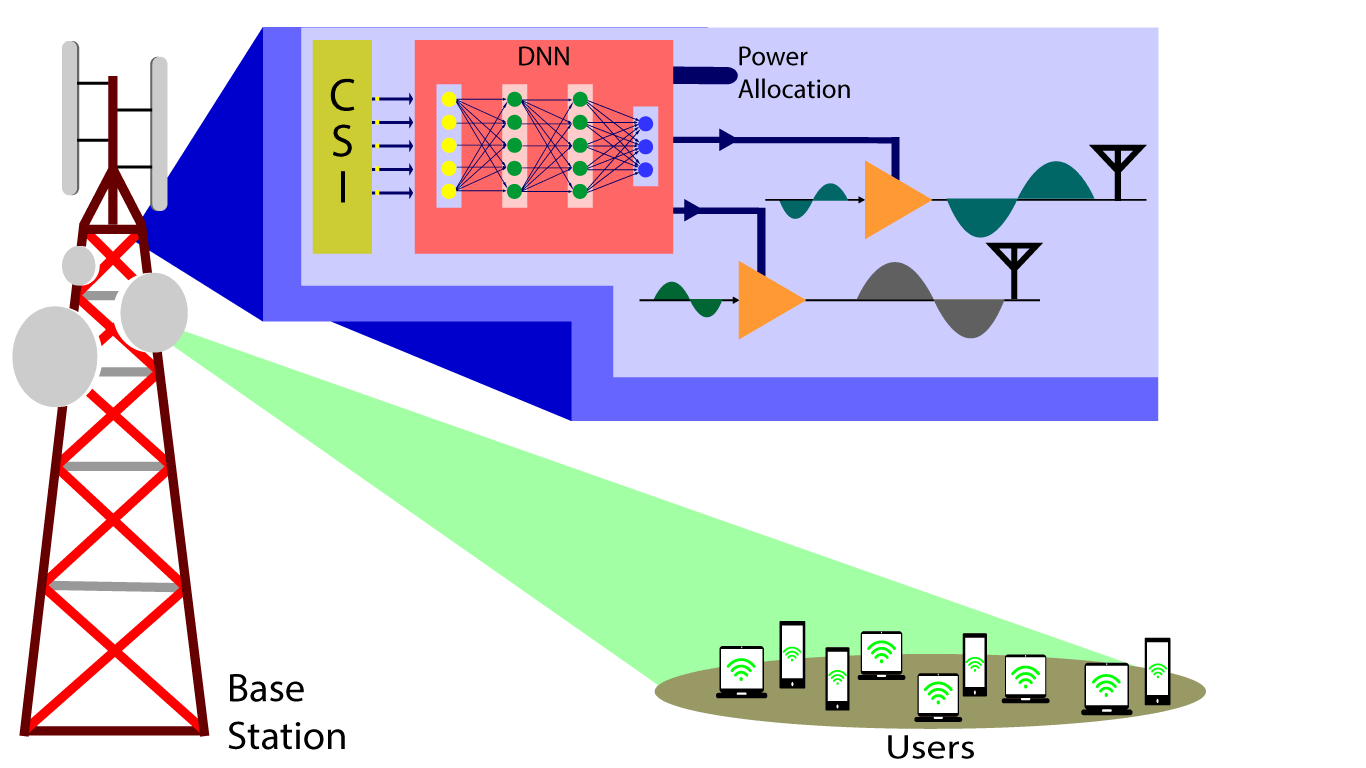
Many research fields have seen significant breakthroughs through machine learning techniques recently. Though traditional communication system design is model-based, recent studies have shown a transformative impact of machine learning techniques on wireless communications. Machine learning techniques especially deep neural networks can learn the complex mapping between the channel state information and the optimal resources. They are shown to work with a significantly lower number of pilot transmissions. Furthermore, they also reduce the implementation complexity compared to the conventional techniques, which sometimes rely on computationally intensive optimization algorithms.
Our research focuses on employing state-of-the-art machine learning techniques to reduce computational complexity significantly and improve performance.
Intelligent reflecting surfaces
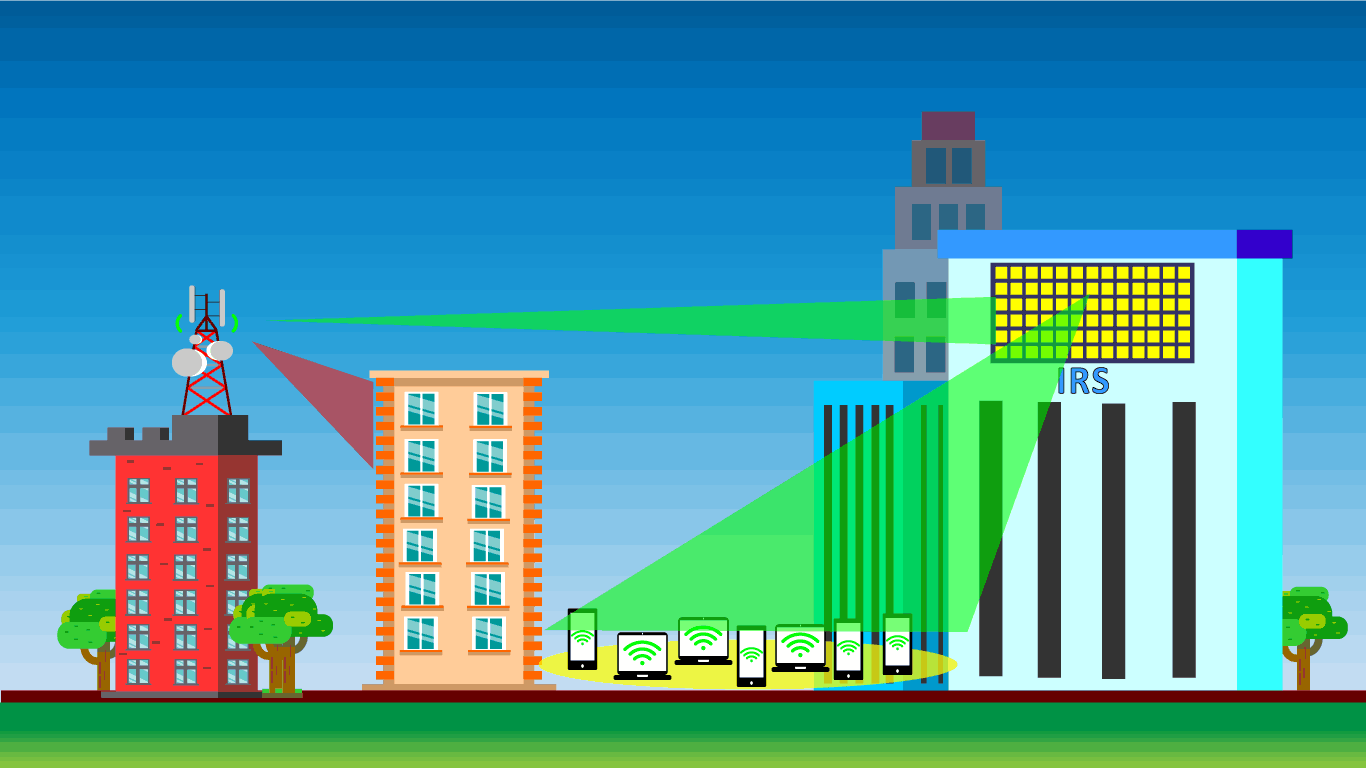
Intelligent reflecting surfaces are envisioned as a key technology for the next-generation wireless communication systems. These surfaces, which can be deployed on walls, are made up of a large number of passive reflective elements. These reflective elements can induce a programmable phase shift to the incident electromagnetic signal in order to focus the signal in the desired direction. The receive signal power is shown to be proportional to the square of the number of reflective elements. Intelligent reflecting surfaces achieve this without requiring expensive radio frequency chains that consist of amplifiers, mixers, filters, and signal converters. Therefore, it reduces power consumption and cost.
Our research focuses on developing optimal communication algorithms to harness the cost and energy efficiency benefits of an Intelligent reflecting surface aided communication system.
Cell-free massive MIMO
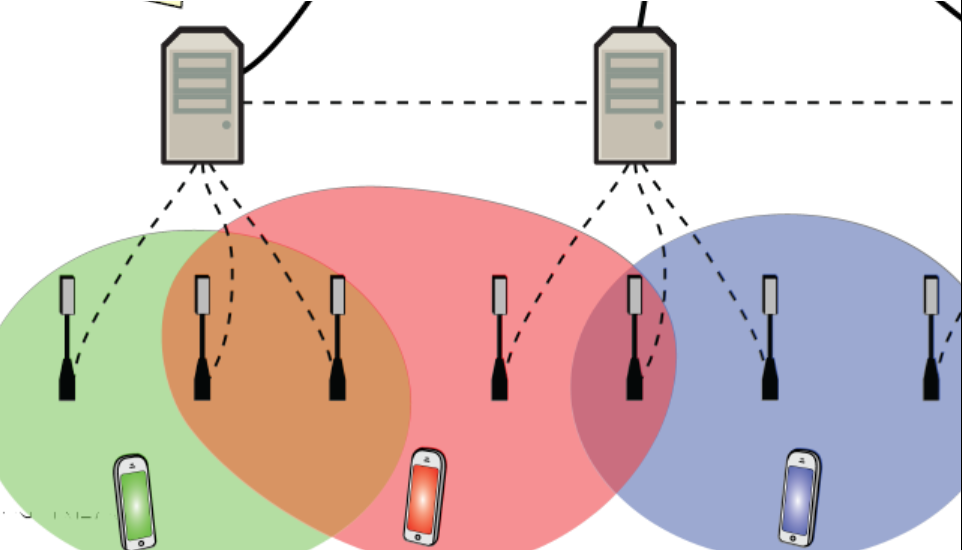
Cell-free massive MIMO, also known as cell-free massive multiple-input multiple-output, is an advanced wireless communication technology that aims to enhance the spectral efficiency and coverage of cellular networks. It holds the potential to revolutionize wireless communication systems by providing seamless connectivity, improved spectral efficiency, and enhanced user experiences. In it, numerous access points (APs) equipped with multiple antennas are distributed across a given area. These APs work collaboratively to serve multiple user devices simultaneously unlike traditional cellular systems where one base station serves a user device within its coverage area. All these distributed APs are connected to a central processing unit (CPU), which connects to the core network. The CPU and APs combinedly perform advanced signal processing tasks such as precoding and power control to adapt to the changing wireless environment.
Due to the distributed antenna architecture, synchronization among the APs is crucial in cell-free massive MIMO to achieve interference mitigation and spectral efficiency gains. Furthermore, energy-efficient operation is important due to the large number of APs. Our research focuses on these two key areas. We work on developing over-the-air synchronization procedures for the APs. We also work on developing energy-efficient power allocation algorithms.
Spectrum Sharing
 Traditionally, the spectrum has been allocated exclusively to one specific user or service, which leads to the underutilization of the scarce spectrum. The demand for high wireless data rates, which heavily depend on the available wireless spectrum, has seen a tremendous increase over the years. Spectrum sharing is a concept in wireless communication that aims to meet this demand by enabling the efficient reuse of the wireless spectrum. It allows multiple users to share the same frequency bands simultaneously, enabling more efficient spectrum utilization. Even spectrum regulators around the world are considering the shared and unlicensed operations in the already allocated spectrum bands. For example, the Federal Communications Commission (FCC) in the USA has opened up 150 MHz spectrum in the 3.5 GHz band for shared use and 1.2 GHz spectrum in 6 GHz band for unlicensed operations.
Traditionally, the spectrum has been allocated exclusively to one specific user or service, which leads to the underutilization of the scarce spectrum. The demand for high wireless data rates, which heavily depend on the available wireless spectrum, has seen a tremendous increase over the years. Spectrum sharing is a concept in wireless communication that aims to meet this demand by enabling the efficient reuse of the wireless spectrum. It allows multiple users to share the same frequency bands simultaneously, enabling more efficient spectrum utilization. Even spectrum regulators around the world are considering the shared and unlicensed operations in the already allocated spectrum bands. For example, the Federal Communications Commission (FCC) in the USA has opened up 150 MHz spectrum in the 3.5 GHz band for shared use and 1.2 GHz spectrum in 6 GHz band for unlicensed operations.
Our research focuses on addressing the challenges in spectrum sharing such as interference management, coordination among multiple users, regulatory frameworks, and fair access to spectrum resources to achieve improved spectrum efficiency, increased capacity, flexibility, and adaptability.

Antenna Selection
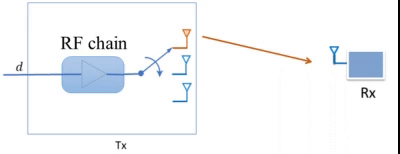 In recent years, multiple input multiple outputs antenna techniques, where transmitter and receiver are equipped with multiple antennas, have become popular to meet the growing demands of wireless communication. However, the main drawback of a multiple antenna system is that each antenna element requires an expensive radio frequency (RF) chain to process the signal to or from the antenna. For example, at the transmitter, each RF chain consists of a digital-to-analog converter, an upconverter, multiple filters, and a power amplifier. While antenna elements are typically cheap, the RF chains constitute a significant portion of the total device cost and power consumption.
In recent years, multiple input multiple outputs antenna techniques, where transmitter and receiver are equipped with multiple antennas, have become popular to meet the growing demands of wireless communication. However, the main drawback of a multiple antenna system is that each antenna element requires an expensive radio frequency (RF) chain to process the signal to or from the antenna. For example, at the transmitter, each RF chain consists of a digital-to-analog converter, an upconverter, multiple filters, and a power amplifier. While antenna elements are typically cheap, the RF chains constitute a significant portion of the total device cost and power consumption.
To reduce the hardware costs of multiple antenna systems, several low-complexity multiple antenna techniques such as antenna selection (AS) have been extensively studied. It uses fewer RF chains than the number of available antennas. A subset of antennas is selected as a function of the channel conditions and connected to the available RF chains. Besides reducing hardware complexity, cost, and size, AS effectively harnesses the diversity benefits of multiple antennas. Consequently, AS is now a part of several wireless standards such as the IEEE 802.11n and long-term-evolution (LTE).
Our research focuses on developing optimal and low-complexity yet near-optimal antenna selection algorithms.
Virtual reality (VR) 360 video multicast systems

Aerial Base Station
Network interruption due to natural disasters is common. On-demand network restoration using aerial base stations will be very helpful.
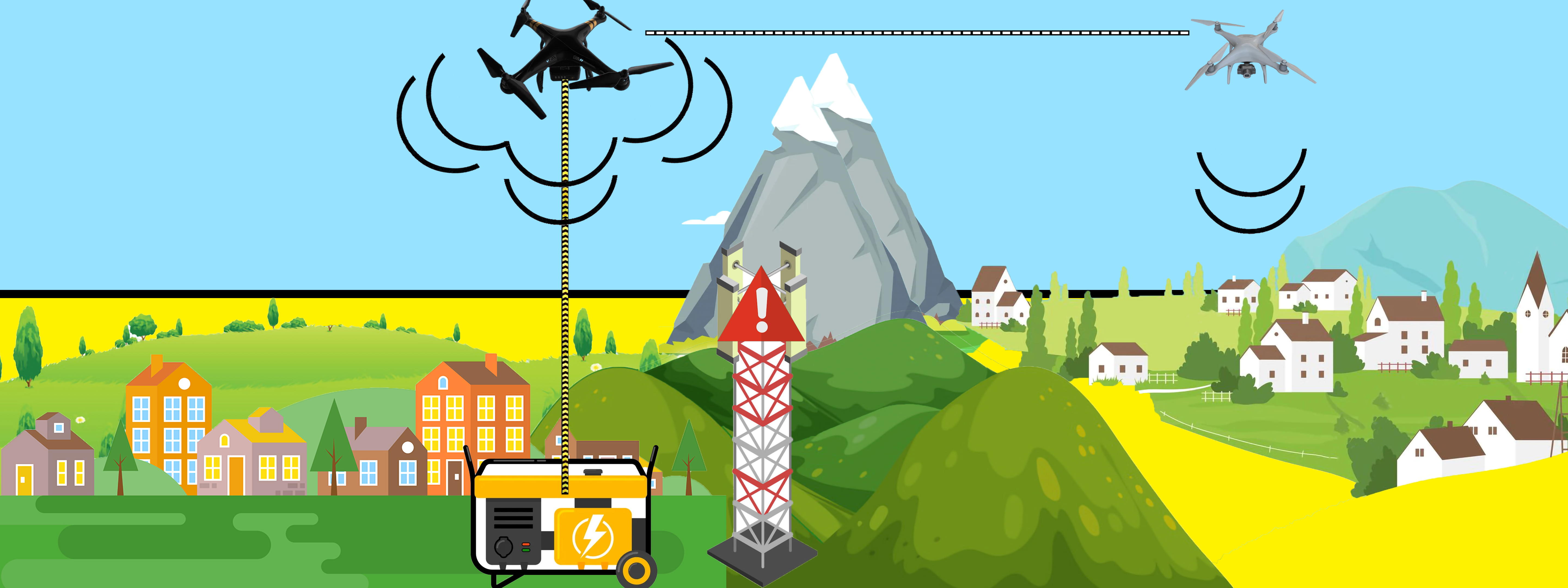

Mixed-reality based devices to help people with low vision

